The Top 6 AI Use Cases For EHS Professionals
Welcome back to another ITRAK 365 blog! With the world witnessing the AI revolution unfold first-hand, we’ve been doing our due diligence to charter the cutting edge of technology in the realm of Environment, Health & Safety (EHS). In this post, we explore six use cases for AI in EHS, ranked from least to most pragmatic. Let’s dive in!
6. The Operational Support System (OSS) Co-Pilot:
In an era where AI tools like Large Language Models (LLMs) are common for everyday tasks, the OSS Co-Pilot takes a specialized approach. It’s an LLM tailored to your organization, securely integrated with your proprietary data.
Pros:
- Instant Access: Gain immediate insight into critical organizational information, leveraging Generative AI (GenAI) without risking confidentiality.
- Efficiency Boost: Answer complex queries rapidly, streamlining daily tasks and boosting productivity.
Cons:
- Depth Limitations: While effective, the OSS Co-Pilot might not always provide niche, in-depth guidance.
- Data Dependency: The tool’s effectiveness relies on the accuracy and currentness of the organization’s knowledge base.
Value Proposition:
The OSS Co-Pilot is a safety net for operators, offering on-demand support from your organization’s comprehensive knowledge base.
5. Incident Trend Analyzer and Log Summarizer:
In an age where data reigns supreme, the sheer volume of incident reports and logs can easily become overwhelming. Despite the best intentions, important trends can get buried beneath the weight of raw data. Enter the Incident Trend Analyzer and Log Summarizer. This powerful tool doesn’t just see numbers and texts; it recognizes patterns, predicting potential risks before they escalate.
Pros:
- Data at Your Fingertips: Forget about sifting through hundreds of logs. This AI provides a condensed and understandable version of events, ensuring that safety metrics are always accessible.
- Spotting the Unseen: Patterns are easy to miss as the volume of incident data grows. But with a tool dedicated to trend spotting, nothing slips through the cracks. Detect subtle safety concerns with ease and precision.
Cons:
- Depth Over Breadth: While the tool effectively skims and identifies trends, the breadth of its analysis might sometimes miss the nuances of individual incidents.
- Good Data In, Good Analysis Out: Just like any AI, the quality of its output is directly proportional to the quality of its input. Incomplete or poorly documented incidents might hamper its effectiveness.
Value Proposition:
By distilling vast amounts of data into actionable insights, EHS professionals can focus on proactive measures, ensuring a safer work environment.
4. Faulty Equipment Alerter:
Machinery, no matter how advanced, has a shelf life. But what if you had a way to predict machinery issues before they become a problem? The Faulty Equipment Alerter isn’t just about pointing out the obvious. It’s about projecting the equipment’s health trajectory and signaling red flags in advance.
Pros:
- Stitch in Time Saves Nine: Detecting wear and tear early on can save organizations from expensive repairs and replacements in the future.
- Safety Over Costs: A malfunctioning piece of equipment is not just a business cost; it’s a potential safety hazard. By pre-emptively identifying issues, risks are significantly minimized.
Cons:
- Data Overload: Continuous monitoring may generate an overwhelming amount of data, requiring significant storage solutions and processing capabilities.
- False Alarms: As with all predictive tools, there’s a chance of false positives, potentially leading to unnecessary maintenance checks.
Value Proposition:
Proactive maintenance and risk reduction make this AI tool indispensable, ensuring that equipment always operates at its best.
3. Vehicle Inspection Scanner:
A vehicle’s exterior might look perfect, but hidden flaws and wear can compromise its functionality and safety. Traditional inspections are labor-intensive and potentially subjective. The Vehicle Inspection Scanner, however, offers an objective, thorough scan every single time.
Pros:
- High Level Of Precision: Get a complete overview of your vehicle’s health, from surface scratches to deeper vulnerabilities.
- Speed and Scalability: Inspect more vehicles in less time, ensuring fleet-wide safety and consistency.
Cons:
- Surface-Level Analysis: The tool’s focus is predominantly on external factors, potentially overlooking internal system issues.
- Quality Matters: The tool’s effectiveness is directly related to the quality and resolution of the imagery input.
Value Proposition:
Transform vehicle safety checks from a cumbersome task to a swift, comprehensive, and objective process.
2. Procedure Copilot:
Every EHS professional knows that procedures are the backbone of safety. But dense manuals don’t always translate to effective learning or immediate problem-solving. The Procedure Copilot takes those hefty documents and turns them into interactive, query-responsive tools, tailored for on-the-job support.
Pros:
- From Theory to Practice: Turn static procedures into dynamic learning experiences, enhancing comprehension and retention.
- Always Available Expert: No need to scroll through pages or ask around. Get answers immediately, right when you need them.
Cons:
- Not a Silver Bullet: While invaluable, the tool cannot replace hands-on training or expertise in complex scenarios.
- Quality of Source Material: The effectiveness of the copilot hinges on the quality and detail of the original procedures.
Value Proposition:
Reimagine procedure-based learning and support, making safety protocols more accessible and intuitive than ever before.
1. Field Data Capture Copilot:
The field is where action happens, and it’s crucial that data capture doesn’t interfere with the task at hand. The Field Data Capture Copilot makes logging form data a seamless experience, ensuring that every detail gets recorded without compromising the job or safety.
Pros:
- Eyes on the Task: Capture data without looking away, ensuring that operators remain 100% engaged in their primary task.
- Simplifying Complexities: Translate observations into structured data effortlessly, bridging the gap between fieldwork and documentation.
Cons:
- Environmental Challenges: Voice capture can be tricky in noisy settings, potentially compromising data accuracy.
- Adaptation Curve: Requires operators to adapt to a new mode of data capture, involving training and adjustment.
Value Proposition:
Empower field operators to capture intricate details without distraction, ensuring that no data gets lost in the rush of action.
Conclusion:
In today’s rapidly evolving technological landscape, the EHS sector stands to benefit tremendously from the integration of AI. These six use cases showcase just the tip of the iceberg when it comes to the transformative potential of AI tools. From enhancing data capture to predictive maintenance and beyond, AI not only streamlines processes but also elevates safety standards, ensuring that both operators and the environment remain protected.
Call to Action:
Are you ready to harness the power of AI for your EHS needs? Start your journey with ITRAK 365 today and propel your organization into the future of safety and efficiency. Discover more about our cutting-edge solutions, and let’s shape a safer, smarter tomorrow together. Reach out to our team now to explore how AI can redefine your EHS practices!
